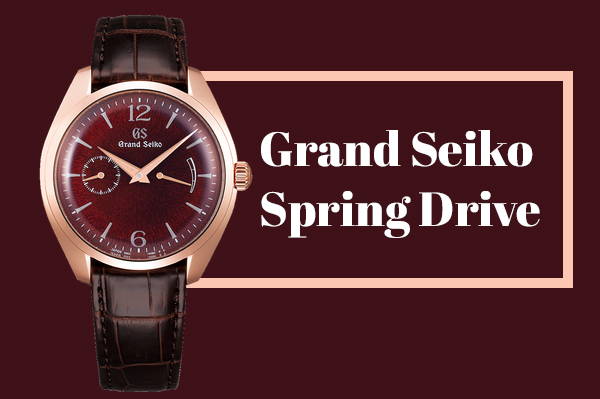Review: Grand Seiko Spring Drive
Back to News & Novelties
Grand Seiko has mastered both mechanical and electronic watchmaking; engineering Seiko Prospex Watches in mechanical and quartz categories. That’s why the creation of Spring Drive is groundbreaking. Their command of both electronic and mechanical watchmaking allows them to combine the two methods for The Grand Seiko Spring Drive.
The Grand Seiko Spring Drive is a highly sophisticated and unique technology that sets it apart from other luxury watches. Though it generates energy like other high-end watches, it stands out by combining mechanical technology with an electronic regulator that delivers a level of precision no other mechanical watch can compete with.
We know that manufacturers mass-produce watches with battery-powered quartz movement, which makes these watches inexpensive. When Grand Seiko incorporating quartz movement into their mechanical tech for the Spring Drive, it caught luxury watch enthusiasts off guard and has them asking, “why?”
What Sets Grand Seiko Spring Drive Apart
The precision and reliability of quartz movement are more accurate than mechanical movement. The battery of a standard quartz watch emits a charge that results in an accuracy of 15 seconds +/- every 30 days. This allows deviation in precision by 15 seconds faster or 15 seconds slower a month. With Grand Seiko incorporating quartz movement to create the Spring Drive, the quartz movement’s frequency rate allows the second hand to move smoothly.
Spring Drive is the most accurate watch on the market now.
Grand Seiko Spring Drive combined the ingenuity of traditional mechanical watch engineering with the quartz movement’s accuracy to produce an accuracy of 1-second +/-. It’s more precise than METAS certified Master Chronometer and COSC certified Chronometer watches. And it’s twice as accurate than Rolex Chronometer Superlative.
How The Grand Seiko Spring Drive Works.
Grand Seiko says the Spring Drive works like so:
The battery sends electricity to a quartz oscillator, where an integrated circuit (IC) detects precise vibrations. The IC then moves the gears forward by exactly one second. The IC’s precision control allows for a high standard of accuracy, with Grand Seiko quartz models achieving a yearly rate of ±10 seconds.
The integrated circuit handles dividing the crystal’s high pule without using the battery, triggering a stepper motor to pump out single-second increments that allow the second hand to move. The integrated circuit is what regulates driving the gears. It observes the speed of the driving force behind the glide wheel and compares it to the oscillator. If the glide wheel rotates too fast for the oscillator, it applies a magnetic brake.
Powered By A Mainspring
Like all other mechanical watches, a traditional mainspring powers the Spring Drive. It stores energy by winding the mainspring by either turning the crown or moving the wrist. The energy transfers to the gears and moves the hands of the watch.
Grand Seiko watches takes full advantage of the high level of torque gained by the mainspring so that it does not need another power source to move the hands of the watch that glide so smoothly.
This isn’t the first time Seiko used quartz movement to increase power and precision in a watch. Seiko was the first watchmaker to put quartz movement in professional dive watches—the Seiko Prospex Watches. Innovation is what Seiko does best.

